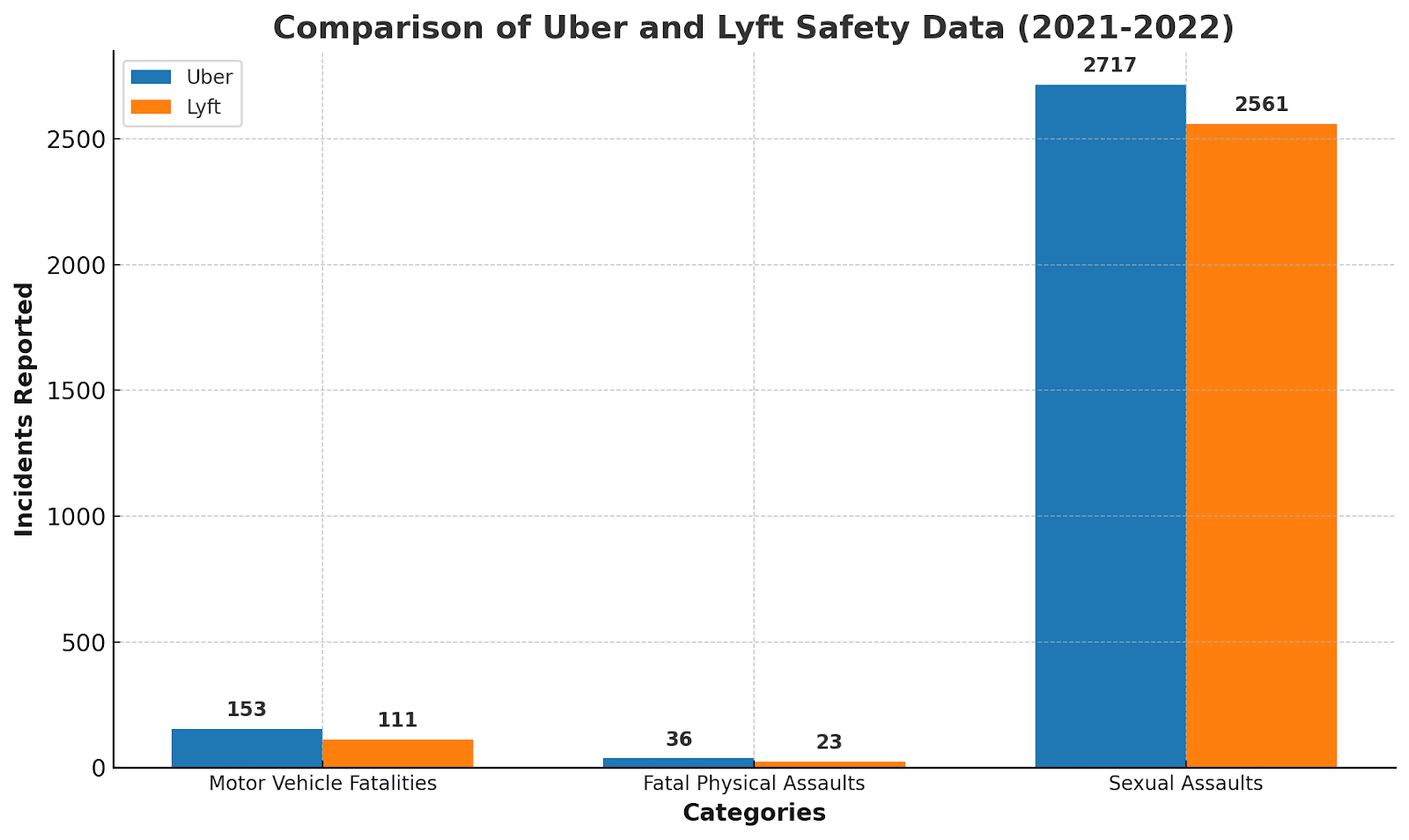How to Stay Safe in Rideshares
Rideshare services have become an integral part of modern transportation, offering convenience and flexibility for travelers. These services are particularly popular for getting to and from the airport or navigating unfamiliar areas without personal vehicles.
Rideshare services also help reduce accidents that result from impaired driving. The impact services like Uber and Lyft have had on the number of drunk driving accidents in Florida can’t go unrecognized—but unfortunately, these services aren’t perfect. There’s an inherent risk that comes with getting into a stranger’s car that passengers should recognize.
How, then, can passengers find the balance between using rideshares to safely navigate the roads and protecting themselves from harm? The Schiller Kessler Group’s recent study breaks down some of the best tips and tricks you can use if you plan on relying on Lyft or Uber.
Rideshare Safety Reports and Accident Statistics
It’s impossible to dispute the increased popularity of rideshare services like Lyft and Uber. Both companies provide travelers with easy access to well-monitored, private transportation services.
According to our investigation, Uber reports that 99% of its rides occur without incident. However, some outliers suggest that ridesharing may have some inherent risks. What’s more, our findings suggest that Uber consistently sees more discrepancies in passenger safety than its sister company, Lyft.
The data displayed here is based on passenger reports.

Between 2021 and 2022, Uber reported:
- 153 motor vehicle fatalities
- 36 fatal physical assaults
- 2,717 sexual assaults
Comparatively, Lyft passengers reported 111 motor vehicle fatalities, 23 physical assaults, and 2,561 sexual assaults. By our count, those numbers suggest that Uber saw 56% more physical assaults than Lyft, not to mention 38% more fatal accidents and 6% more sexual assaults.
Do these numbers mean that it’s unsafe for travelers to use Lyft and Uber to get where they need to go? No. Again, 99% of Uber rides end without incident. However, passengers may want to take steps to ensure their rides are as safe as possible.
Tips and Tricks for Staying Safe While Using a Rideshare Service
If you want to protect yourself from serious accidents or other types of harm when using a rideshare service, it’s in your best interest to:
- Choose where you request your ride carefully – we recommend that you book your rideshare in a well-lit area, ideally indoors. It’s in your best interest to stay indoors until your app of choice informs you that your rideshare driver has arrived at your location.
- Confirm a driver’s identity – you should never get into an alleged rideshare without first checking the car’s license plate number against the one provided to you through Uber or Lyft’s app. You can also ask a driver their name before you get into their car.
- Share a driver’s information with someone you trust – once you receive your driver’s name and license plate number, consider screenshotting your phone and sending that information to someone you trust. This way, if you get into an accident or are otherwise hurt, your friend can provide police officers with information about a driver’s identity.
- Sit in the back and wear a seatbelt – seatbelts protect you from the worst of a serious accident by preventing you from flying out of a driver’s windshield. Sitting in the back of a rideshare can also put some distance between you and a driver, ensuring you have more space to get away if you feel like a driver intends to put you in an uncomfortable position.
- Limit the personal information you share with a driver – it’s tempting to engage in friendly small talk with your rideshare driver. However, it is always in your best interest to limit the personal information you share with a stranger. Do not tell a rideshare driver where you work, who you’re visiting, or whether or not you’re traveling alone.
- Check a driver’s transportation rating – if you’re paired with a rideshare driver who has an overall service rating of 4.8 or below, you have the right to request a new driver. Both Lyft and Uber will remove drivers with low ratings from their accounts, ensuring passengers only have access to the best of the best area operators.
- Take advantage of in-app safety features – both Lyft and Uber have put safety features into their apps that allow passengers to report dangerous drivers and get help in the face of accidents or dangerous physical encounters. You can familiarize yourself with these features long before you get into a car with a rideshare driver.
- Don’t be afraid to call for help – if you feel like you’re at risk while using a rideshare, you have the right to call 911. Police officers can apprehend a rideshare driver who violates your trust or puts you in harm’s way.
What to Expect from Popular Ridesharing Services
Rideshare services provide a convenient alternative to driving, particularly for those who don’t own a car, don’t want to rent a car, or don’t have their licenses. These services make it easier for people to navigate unfamiliar areas and avoid the hassle of parking in congested lots.
It’s also easier for rideshare drivers to navigate busy airport terminals, especially since most airports have established rideshare pick-up spots. However, passengers should anticipate higher-than-average rideshare fees and busier local pick-ups during peak travel times.
Statements from The Schiller Kessler Group
When asked about the pros and cons of using rideshare services, a representative from The Schiller Kessler Group said, “This study reveals the duality of the average rideshare services. While these services are usually safe, they can put riders at risk for serious accidents or uncomfortable physical encounters.
Those risks don’t make rideshares inherently dangerous, but they do require passengers to engage with rideshare drivers cautiously. We believe that passengers who take steps to protect themselves from driver negligence can become part of the 99% who’ve used rideshares without incident.”
The spokesperson continued, saying, “Proactive measures including driver verification, sharing trip details, and the use of in-app emergency features are some of the best safety tools today’s rideshare passengers have at their disposal.”
You Can Take Steps to Keep Yourself Safe in a Rideshare
You don’t have to shy away from using a rideshare service, but you should still take caution when getting into a stranger’s car. Familiarizing yourself with the risks that passengers see can help you better prepare for safe travel.
Our team hopes that increased awareness about the subtle dangers of ridesharing can encourage drivers and corporate representatives to invest more resources in initiatives that improve passengers’ safety.

